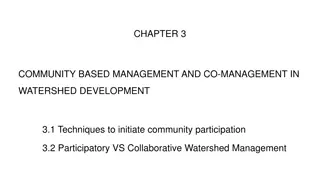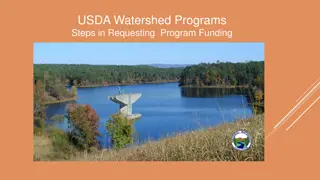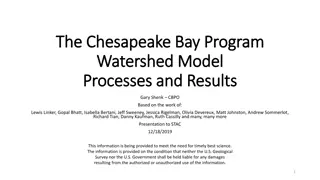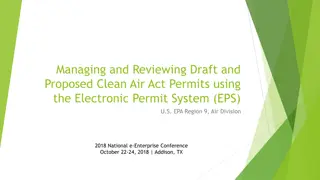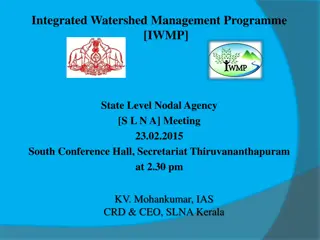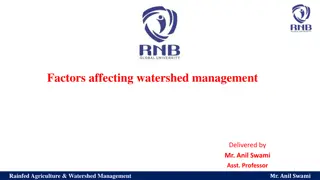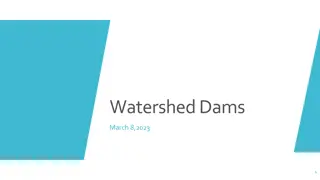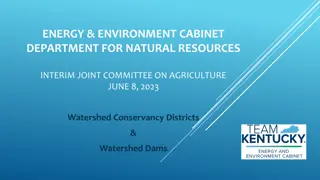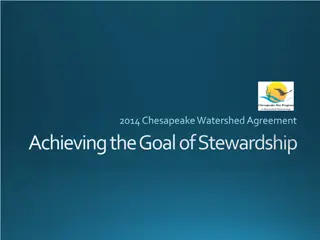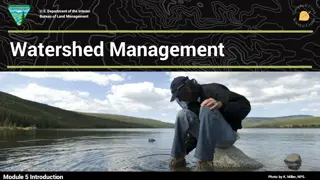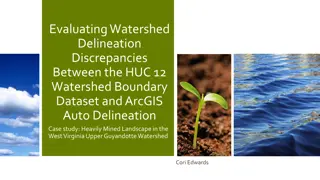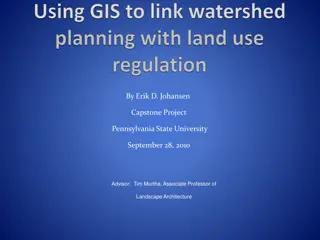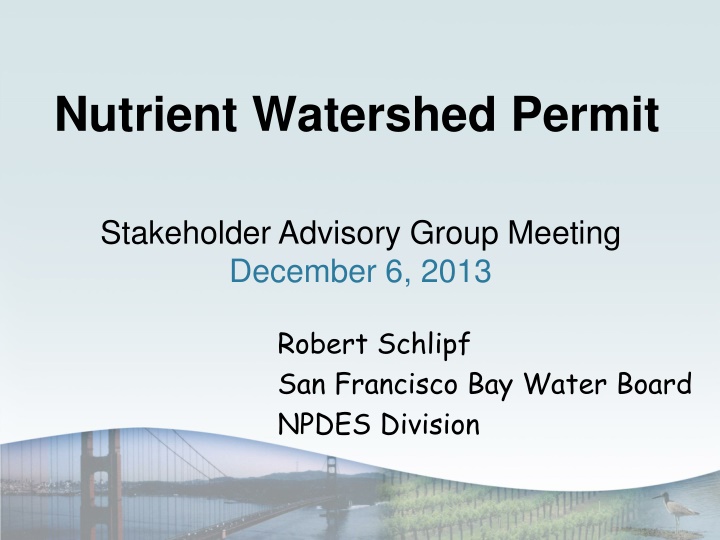
Nutrient Watershed Permit Stakeholder Advisory Group Meeting
The Nutrient Watershed Permit Stakeholder Advisory Group Meeting held on December 6, 2013, addressed various components including effluent monitoring, annual reporting, treatment optimization, nutrient studies, and more. The meeting focused on monitoring nutrient trends, supporting nutrient studies through monitoring, modeling, and data synthesis. It also discussed treatment plant optimization and upgrade evaluation to inform management decisions. The timeline for the permit process was outlined from Winter Tentative Order to Spring Adoption.
Download Presentation

Please find below an Image/Link to download the presentation.
The content on the website is provided AS IS for your information and personal use only. It may not be sold, licensed, or shared on other websites without obtaining consent from the author. If you encounter any issues during the download, it is possible that the publisher has removed the file from their server.
You are allowed to download the files provided on this website for personal or commercial use, subject to the condition that they are used lawfully. All files are the property of their respective owners.
The content on the website is provided AS IS for your information and personal use only. It may not be sold, licensed, or shared on other websites without obtaining consent from the author.
E N D
Presentation Transcript
Nutrient Watershed Permit Stakeholder Advisory Group Meeting December 6, 2013 Robert Schlipf San Francisco Bay Water Board NPDES Division
Permit Components Effluent Monitoring Annual Reporting Treatment optimizatio n & upgrades evaluation Nutrient studies
Monitoring & Reporting Monitoring similar to current effort Reporting on nutrient trends Investigating any nutrient trends
Support Nutrient Studies Monitoring, modeling, special studies, data synthesis Coordinate via Nutrient Strategy governance structure Nutrien t studies Cost allocation to be developed
Treatment Plant Optimization and Upgrade Evaluation Understand load reduction feasibility and cost Prevent process change that would increase nutrient discharge Inform short and long-term management decisions
Permit Time Line Winter Tentative Order Spring Adoption



